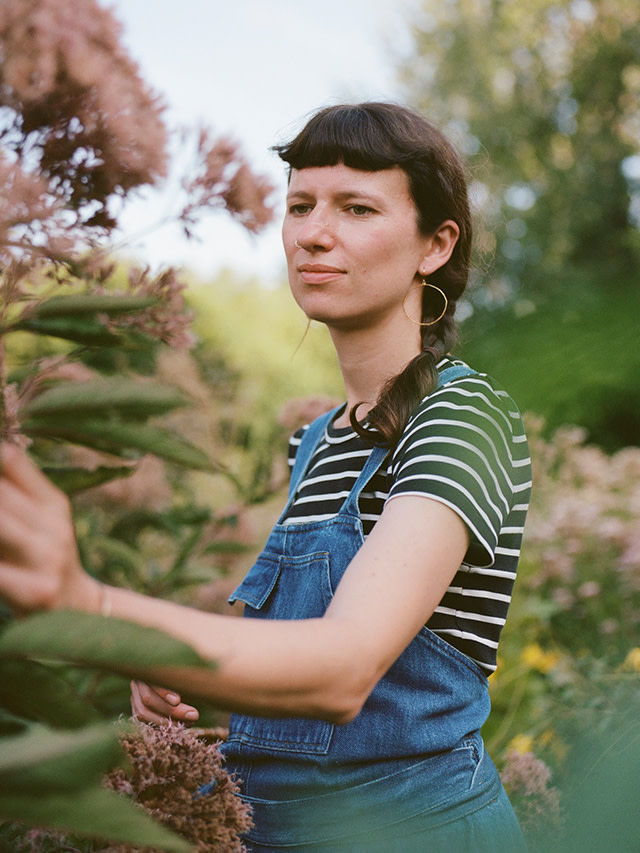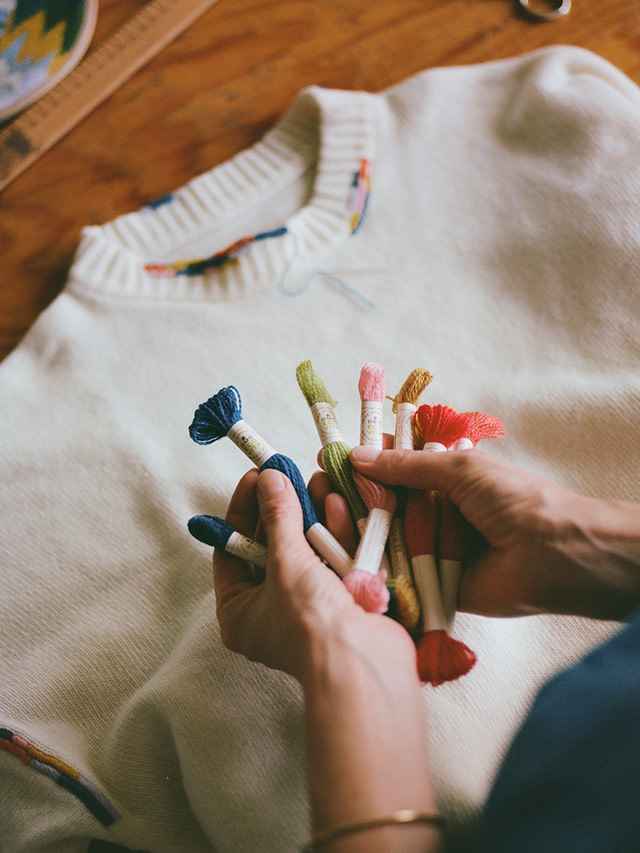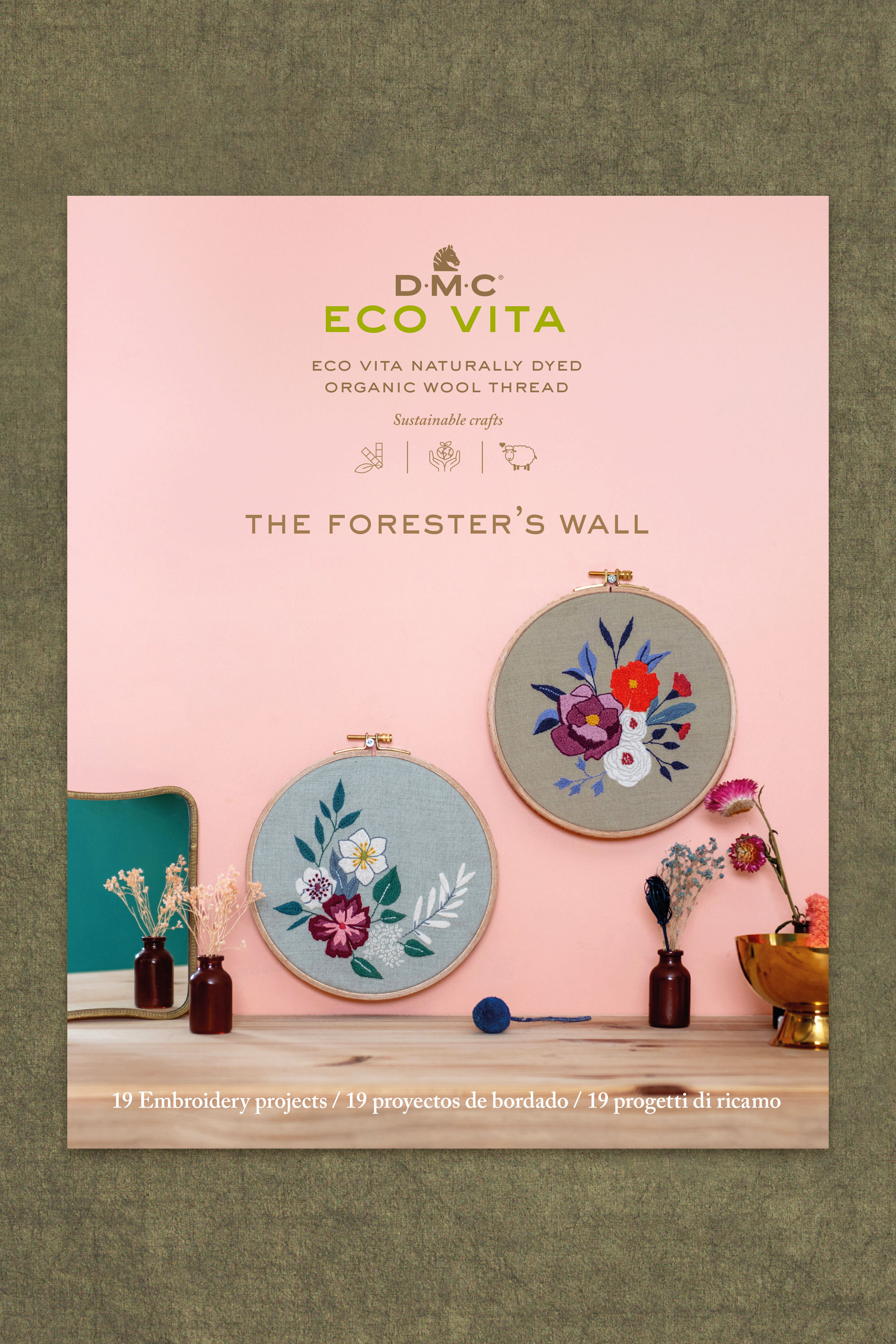Juliette is a French artist specializing in hand dyeing and screen printing. She enjoys combining old techniques such as natural dyeing and printing with a contemporary lifestyle and style.
Meet Juliette Vergne
1. How long have you been using natural dyes?
I started naturally dyeing in 2011 while studying textile design. I went to a one-day discovery workshop and knew then it was a technique I wanted to explore. Then, I practiced in my kitchen for 2 years before going to train professionally and creating a fully equipped workshop.
2. What are your dyeing essentials? (thread/accessories)
I often say a good saucepan is essential! It’s a technique that doesn’t require complex equipment. The dyeing workshops look a lot like a kitchen: pots, colanders, wooden spoons and so on. I also like to work with beautiful fabrics such as silk, wool and linen. These are my favorite fibers.
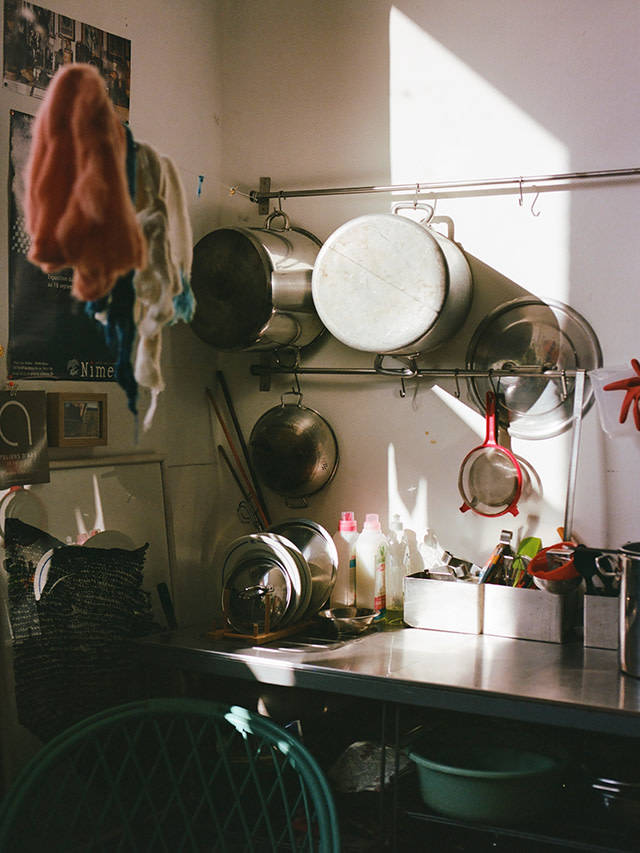
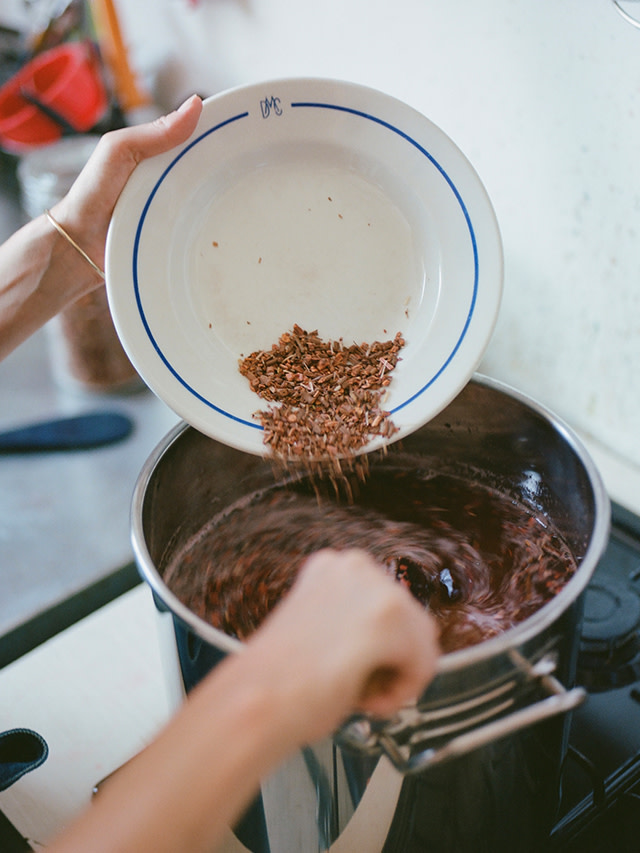
3. What inspires you?
I am inspired by many different things including music, visual arts and nature. I really like art, especially forms that are expressionistic and a bit bizarre.
4. What’s your favorite ingredient to dye with?
Without a doubt madder is my favorite plant. I love all the shades you can get with it, from dusty pink to brick red. It is a complex, vibrant plant, with a multitude of coloring molecules and a long history of use as a dye. I like the idea of perpetuating a real textile tradition by using it. Adrianople red is a historic color, it is a very bright red made from madder and is the emblematic color of the city Mulhouse.

5. What’s your favorite piece of work?
My favorite pieces are silk squares or scarves. I see them as being big blank pages where I am free to express myself.
6. What difference has/does being a craftsperson made to your life?
I knew very quickly that I wanted to have a studio and work as an artist. It's been 10 years since I set up my workshop and I couldn't see myself doing anything else. There was far too much research on vegetable color that I wanted to pursue. Being a craftsman means managing everything from A to Z, you never get bored as there are always different things to do and explore. Working with your hands has a meditative aspect that I really enjoy. It's also a solitary job, which I also like.
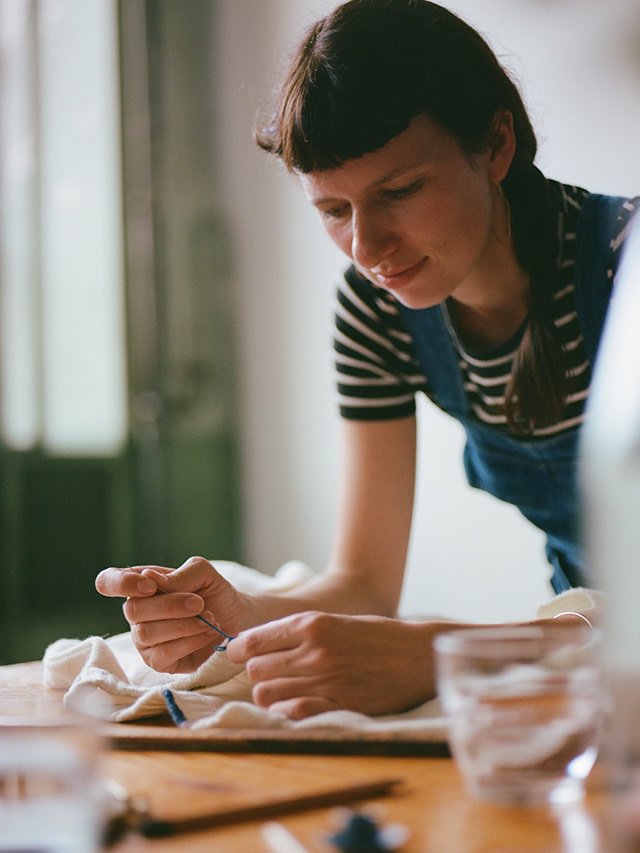

7. How did you learn about natural dyes?
I trained with the Couleur Garance association in the south of France with Michel Garcia. He gave me the taste for this technique and its great potential and after my first training with him I was hooked!
8. Are there any colors you are drawn to in particular?
I'm a big lover of the color green, it's a pretty difficult color to get with plant dyes. Recently, I've been working on creating black from natural dyes, you can use different plants to create very interesting shades of black.
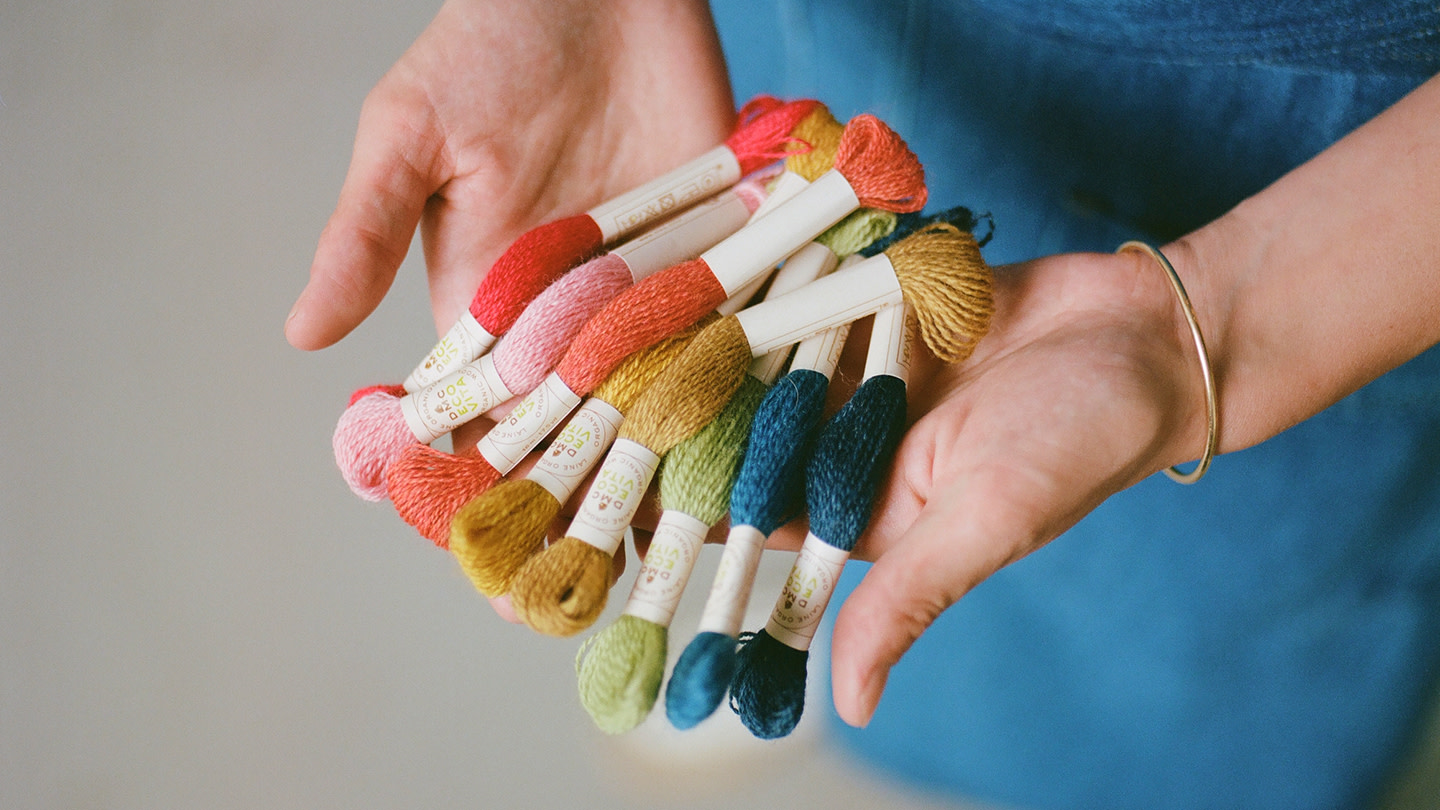
9. Are there some natural ingredients that are easier to work with than others?
It is more complicated to fix dyes in cellulose fibers such as cotton and linen, it requires more steps and more time. Wool and silk hold color better. When it comes to plants, some dyes are easier to extract than others. Natural dyeing as a whole is not complicated, it just requires following different steps such as having a good mordant (a mordant is a substance used to fix a dye by making it insoluble) recipe adapted to the chosen fiber and rigorous extraction of the plant to obtain a dye bath.
10. What tips do you have for anyone who wants to try dyeing their own thread?
I’d recommend being methodical. Start by sampling on a small amount of your chosen fiber or fabric to get familiar with a dye and then you can move on to a larger project. There are a number of good books with recipes which are great to follow. You also need to buy or collect quality ingredients and prepare your skeins of yarn well.
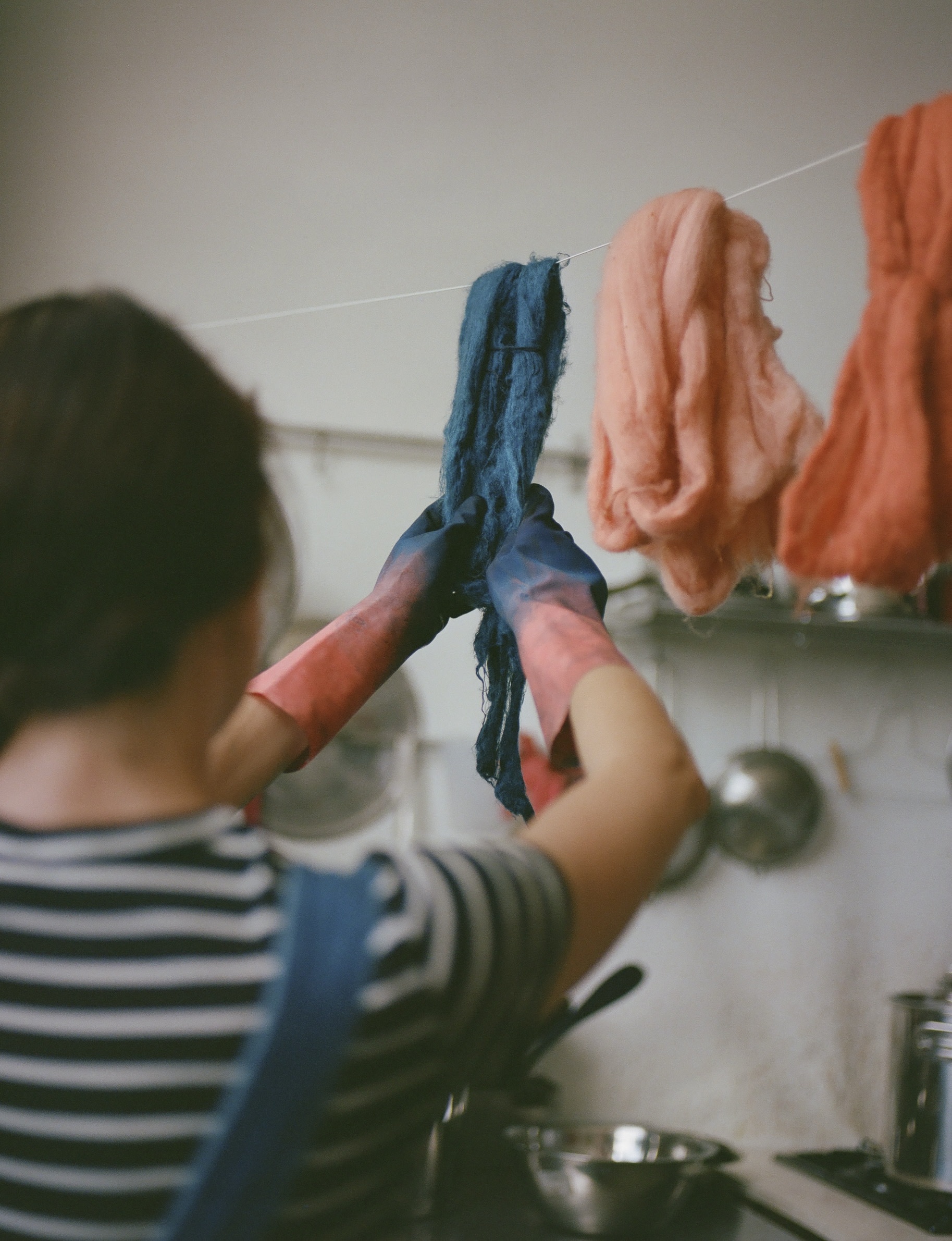

11. Do natural dyes only give muted tones or can you achieve bright colors too?
Yes, you can achieve bright colors. We often have an image of natural dye that it only creates pastel tones but we can also create very bright tones. To do this, you must use quality dyeing plants and use large quantities. With the exception of certain plants, that are very concentrated in dye, you need to calculate a plant/weight ratio of the fabric which is being dyed. Another rookie mistake is believing you can create a tincture with any plant or vegetable. The plants are chosen according to their recognised dyeing quality and preferably their colorfast attributes. Typically one cannot make a perennial dye from beetroot, it is not a plant that contains a strong, colorfast dye.
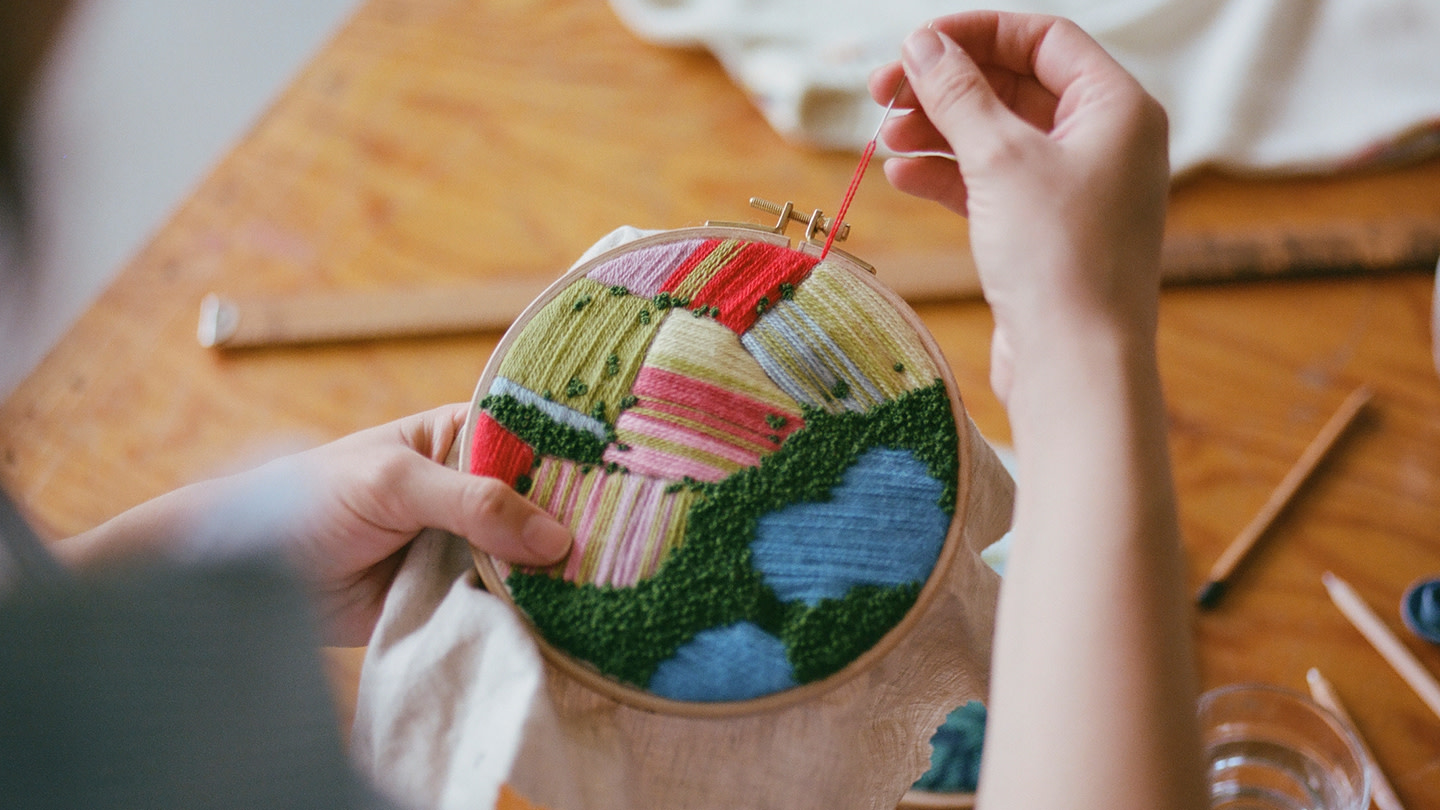
12. How long does it take to make a batch of dye?
We can’t generalize because each textile fiber and plant work differently, but it takes several hours to do the mordanting, dyeing and rinsing.
13. What do you enjoy most about the process of dyeing?
It is this form of alchemy between materials. We extract a color that is often hidden within a plant to fix it on a textile. I am fascinated by the process which often interests me more than the result. It is a technique that responds to very current societal issues, particularly on questions of ecology. This is why vegetable dye has experienced a real resurgence of interest in recent years when it had almost disappeared. A new generation of dyers and users of vegetable color are being born. We must exchange as much information and knowledge as possible to continue to support and develop this magnificent practice of natural dyeing.
